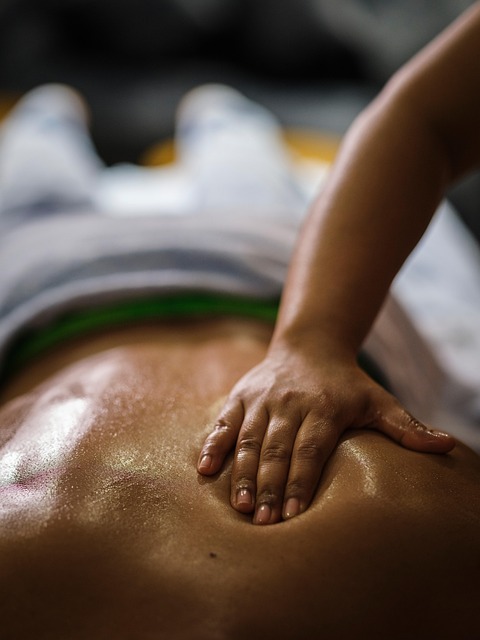Contrast therapy, combining hot and cold water immersion, is a powerful recovery method for athletes. By understanding vasodilation and vasoconstriction, athletes can use contrast baths post-workout to reduce inflammation, speed up nutrient delivery, flush out metabolic waste, and ease muscle soreness, ultimately enhancing performance and preventing sports injuries. Modern sports medicine recognizes its effectiveness, with many professional teams adopting this technique as part of their injury prevention routines.
Contrast therapy, an ancient practice with modern applications, is revolutionizing injury prevention strategies in sports medicine. This powerful tool involves alternating between hot and cold treatments, enhancing blood flow and reducing inflammation. By accelerating recovery and promoting tissue repair, contrast therapy emerges as a game-changer for athletes looking to stay active and prevent injuries. Discover how this simple yet effective method can be seamlessly integrated into your routine, offering tangible benefits as a recovery method for sports injury.
Understanding Contrast Therapy: A Powerful Tool for Athletes
Contrast therapy, a powerful tool in the athlete’s arsenal, involves alternating between hot and cold treatments to stimulate blood flow and reduce inflammation. This simple yet effective recovery method has gained significant popularity among sports professionals due to its ability to enhance performance and expedite injury prevention strategies. By incorporating contrast baths, compression, and ice applications, athletes can significantly improve their post-workout recovery process.
For athletes, understanding the science behind contrast therapy is key to harnessing its benefits. The therapeutic effect lies in the body’s natural response to temperature variations. Hot temperatures cause blood vessels to dilate, increasing circulation and delivering essential nutrients to sore muscles. Conversely, cold temperatures constrict blood vessels, reducing inflammation and minimizing swelling. This natural process accelerates muscle repair and prepares the body for the next training session, making contrast therapy an invaluable addition to any athlete’s recovery regimen.
The Science Behind Contrast Bathing and Its Benefits
The Science Behind Contrast Bathing and Its Benefits
Contrast bathing, an ancient practice re-emerging in modern sports medicine, involves alternating between hot and cold water. This simple yet powerful technique has gained attention for its potential to enhance recovery methods for sports injury. The underlying science revolves around the body’s vasodilation and vasoconstriction responses. Hot water causes blood vessels to expand (vasodilation), increasing blood flow to muscles and promoting the removal of metabolic waste products like lactic acid. Cold water, on the other hand, triggers a narrowing of blood vessels (vasoconstriction), reducing inflammation and minimizing swelling in injured areas.
This contrast creates an optimal environment for healing. By accelerating the clearance of toxins and limiting inflammatory response, contrast bathing can significantly reduce muscle soreness, joint stiffness, and recovery time post-exercise or injury. It’s particularly beneficial for athletes looking to implement effective recovery strategies, aiming to stay competitive while minimizing downtime due to injuries.
Integrating Contrast Therapy into Injury Prevention Routines
Integrating contrast therapy into injury prevention routines offers a compelling strategy for athletes and active individuals aiming to enhance their performance and minimize the risk of injuries. This recovery method, which alternates between hot and cold treatments, has gained recognition in sports medicine due to its ability to reduce inflammation, promote blood flow, and ease muscle soreness. By incorporating contrast baths or ice immersions into their post-workout regimen, athletes can support their body’s natural healing processes.
For instance, a contrast therapy session might involve submerging oneself in hot water for 10 minutes, followed by a rapid transition to cold water for an equal duration. This process repeats several times, stimulating the circulatory system and encouraging the elimination of metabolic waste products from working muscles. As a result, athletes can experience improved recovery between intense training sessions, potentially reducing the likelihood of overuse injuries commonly associated with repetitive motion.
Real-World Applications: Success Stories from Sports Medicine
In the realm of sports medicine, contrast therapy has emerged as a powerful tool in injury prevention strategies. This innovative approach involves alternating between hot and cold treatments, offering numerous benefits for athletes seeking to enhance their recovery methods for sports injuries. Real-world applications have shown remarkable success stories, where professional athletes and trainers alike have embraced this therapy to reduce inflammation, improve blood circulation, and speed up muscle repair.
By subjecting injured areas to rapid temperature shifts, contrast therapy helps flush out metabolic waste products and delivers essential nutrients to the affected tissues. This process accelerates recovery and reduces the risk of persistent injuries. Many sports teams now incorporate contrast baths or compression boots with ice and heat into their post-workout routines, demonstrating a proactive approach to injury prevention. These success stories from the front lines of sports medicine highlight the potential for contrast therapy to revolutionize how athletes manage and prevent physical setbacks.
Contrast therapy, with its simple yet powerful approach, emerges as a valuable addition to injury prevention strategies. By combining warm and cold temperatures, this method enhances blood flow, reduces inflammation, and accelerates muscle recovery—all key factors in optimizing athletic performance and minimizing the risk of sports injuries. Integrating contrast bathing or contrast therapy into routine training regimens can empower athletes to take control of their well-being and foster a more robust, resilient body. As seen in various success stories from sports medicine, adopting these innovative recovery methods for sports injuries can significantly contribute to long-term athletic excellence and injury prevention.
